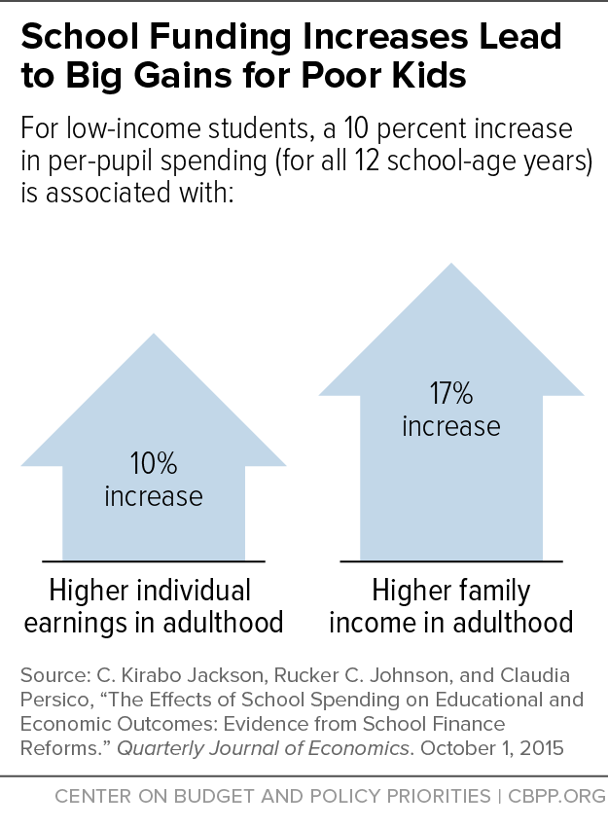BEYOND THE NUMBERS
Sixty-six years after the Supreme Court’s Brown v. Board of Education decision found racial segregation in schools unconstitutional, COVID-19 is presenting new challenges to families and education advocates who are still fighting to ensure that states uphold their education funding obligations. The state budget crisis could prompt states to lean heavily on K-12 funding cuts, likely exacerbating longstanding inequities at a time when unequal remote learning opportunities may deepen divides between low-income students, who are disproportionately students of color, and those with higher incomes.
Fifteen states — Arizona, Arkansas, Delaware, Iowa, Kansas, Maryland, Michigan, New Hampshire, New Jersey, New Mexico, New York, North Carolina, Pennsylvania, Rhode Island, and Tennessee — are facing lawsuits, brought before the pandemic, to compel adequate or equitable school funding, according to the Center for Education Equity. Adequate school funding helps raise high school completion rates, close achievement gaps, and make the future workforce more productive by boosting student outcomes, studies show. Equity, meanwhile, often requires providing more resources to high-poverty schools and schools with high shares of children of color. Nationally, school districts serving the most Black, Latinx, and Native American students receive significantly less state and local funding than districts serving the fewest.
With states facing massive budget shortfalls and K-12 education making up about a quarter of state spending nationwide, many state lawmakers may cut school funding to balance their budgets, as they did during the Great Recession of a decade ago. If they make drastic education cuts, they will create more barriers and inequities and more states may face litigation — a critical tool when policymakers fail. While the status of even active suits is uncertain with court systems partially or fully closed, states policymakers could avoid court disputes altogether by ensuring the proper level and distribution of money in their K-12 budgets.
K-12 school investment is crucial for communities to thrive and for the economy to offer broad opportunity. States that adequately and equitably fund schools can better implement reforms — like expanding early learning, reducing class sizes, and improving teacher quality — that improve educational and earnings outcomes, especially for children of color and those in economically struggling communities. (See chart.)
In contrast, school districts that cut funding risk lower high school graduation rates and lower test scores. For every 10 percent of spending that school districts cut in the aftermath of the Great Recession, graduation rates fell by 2.6 percentage points, according to one recent study. Wealthier school districts can more easily make up for lost state funding, but less wealthy districts often suffer under budget cuts, leading to deeper educational divides between students in low- and higher-income districts.
Amid the current health and economic crisis, states should prioritize school funding with equity in mind. It’s especially important for states, such as Arizona and North Carolina, that haven’t fully recovered from the cuts they made during the Great Recession. More than six decades since Brown v. Board of Education, it’s long past time to achieve its vision.

